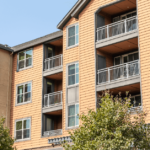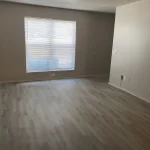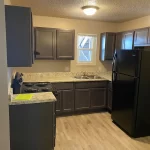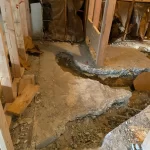Building safe, lasting homes for families in need brings together foster care and affordable housing—and that’s exactly where Midtown Builders shines. When we talk about foster care and affordable housing, it’s not just brick and mortar; it’s creating a warm, dependable place where kids can thrive. Blending foster programs with low-income housing solutions makes a real impact. In this blog, we dive into how foster care and affordable housing partnerships, led by LIHTC affordable housing builder teams and affordable housing contractor experts, truly support vulnerable families.
Understanding the Need: Foster Care Families
Foster families often juggle unstable living situations, high costs, and emotional stress. A dedicated affordable housing contractor team can ease the strain. These families need homes that offer security and flexibility—places where kids feel safe and grow roots.
Affordable Housing Opportunities
Affordable housing opens doors for many families. A good lihctc affordable housing builder:
- Secures LIHTC funding for rent-limited units
- Works with nonprofits to serve vulnerable populations
- Partners with HUD and USDA programs to fund supportive housing
These steps help reduce housing instability for foster families.
LIHTC Builder Roles
LIHTC builder specialists handle:
- Designing cost-effective, warm units
- Managing funding applications and compliance
- Collaborating with affordable housing contractor teams to meet regional requirements
They’re key in turning plans into nurturing homes.
HUD & USDA Support
- HUD (U.S. Department of Housing and Urban Development) and USDA (United States Department of Agriculture) offer critical financial tools such as grants, rental vouchers, and low-interest loans to support affordable housing development and accessibility.
- A LIHTC (Low-Income Housing Tax Credit) affordable housing builder partners with these agencies to fill funding gaps, manage complex application processes, and ensure properties remain compliant with federal housing guidelines.
Design Considerations for Foster Housing
Design matters:
- Sliding walls for flexibility
- Shared common rooms for group activities
- Enclosed yards for play
- ADA-accessible layouts
A thoughtful, affordable housing contractor ensures homes meet the emotional and practical needs of foster kids.
How Contractors Can Add Value
Certain actions by affordable housing contractor teams make a major difference:
- Engage with social services during planning
- Use kid-proof materials
- Schedule regular maintenance for safety
- Provide on-site community spaces
These steps create nurturing, stable environments.
Midwest vs. Southeast: Regional Challenges
Building safe, lasting homes for families, especially those involved in the foster care system, means thinking beyond the blueprint. Where a home is built makes a big difference, and both the Midwest and Southeast come with their own set of challenges.
- In the Midwest, freezing winters mean homes need solid insulation, reliable heating, and strong weatherproofing. For families already facing tough situations, a warm, energy-efficient home can make daily life a little more manageable and a lot more comfortable.
- Down in the Southeast, it’s a different story. Constant humidity, heavy rains, and storm season mean builders have to think smart. That means using moisture-resistant materials, adding features that prevent mold, and making sure homes can handle whatever nature throws their way.
Good LIHTC builder teams adapt design and material to climate and codes, ensuring long-term resilience.
FAQs
Q. What is LIHTC, and how does it aid foster care housing?
A. The Low-Income Housing Tax Credit (LIHTC) encourages affordable housing by offering tax incentives. LIHTC builders use this to construct family-friendly units.
Q. Do USDA or HUD programs specifically support foster families?
A. Yes. HUD offers vouchers and grants tailored for families, while USDA supports rural housing projects. Affordable housing contractor teams often bundle these with LIHTC funding.
Q. What sort of design features benefit foster children?
A. Features like safety gates, open play zones, flexible walls, and secure storage create caring spaces. A savvy LIHTC builder and contractor knows these details.
Q. Can existing apartments be converted for foster care use?
A. Absolutely. A skilled affordable housing contractor can retrofit units with safety enhancements, child-friendly layouts, and community areas.
Q. Are there tax credits available for these housing projects?
A. Yes. LIHTC is the main federal tax credit, and pairing it with HUD or USDA aid increases feasibility. A lihctc affordable housing builder guides clients through claiming these.
Brighter Futures Through Housing
Bringing together foster care and affordable housing, we see that a coordinated approach makes a tangible difference. With LIHTC affordable housing builder and affordable housing contractor roles working alongside HUD, USDA, and LIHTC builder expertise, families find the stable homes they need. Foster care and affordable housing go hand in hand, providing essential support to children and caregivers.
Curious how we can help? Contact us to explore project ideas or partnerships.










